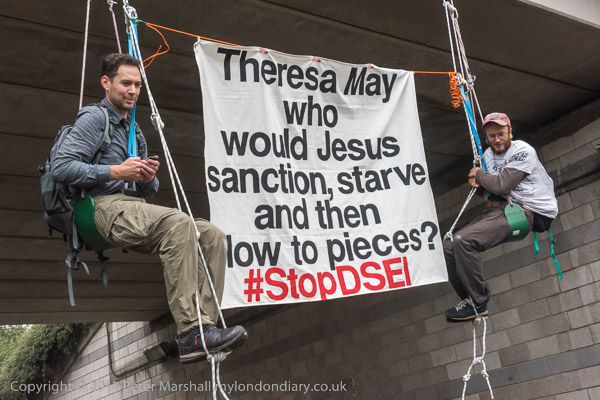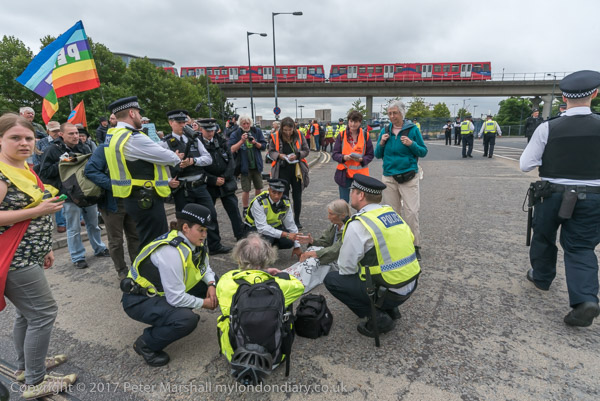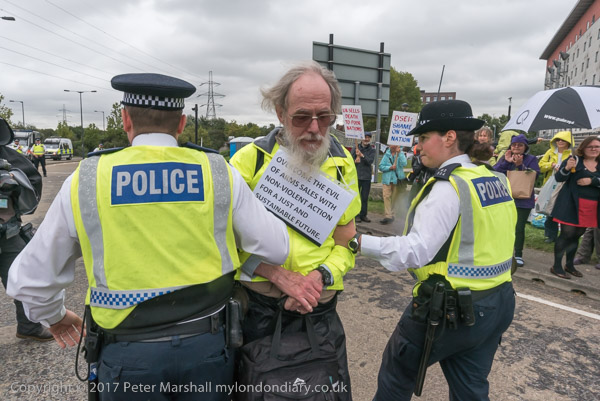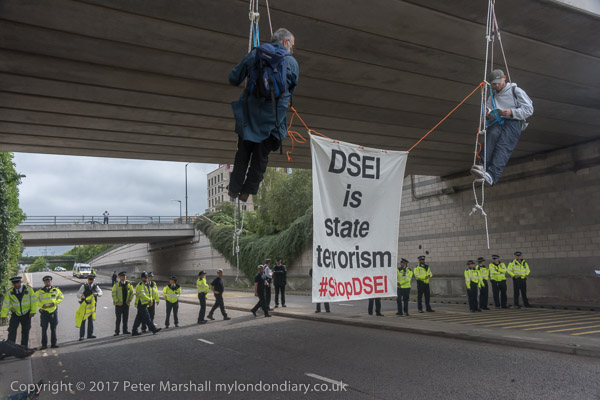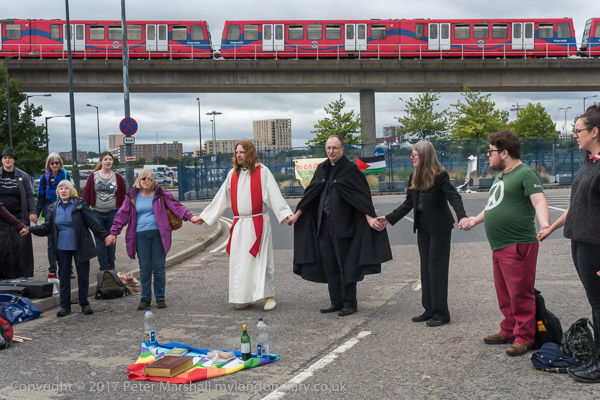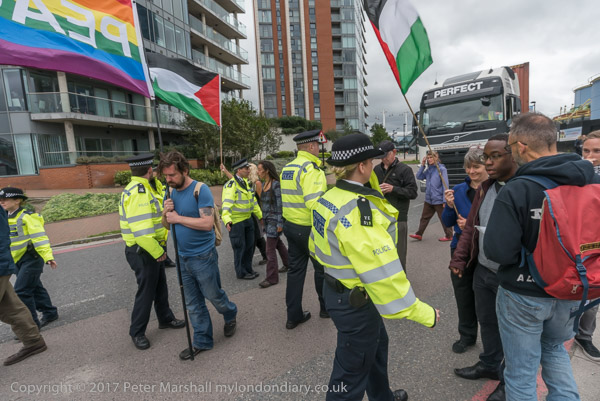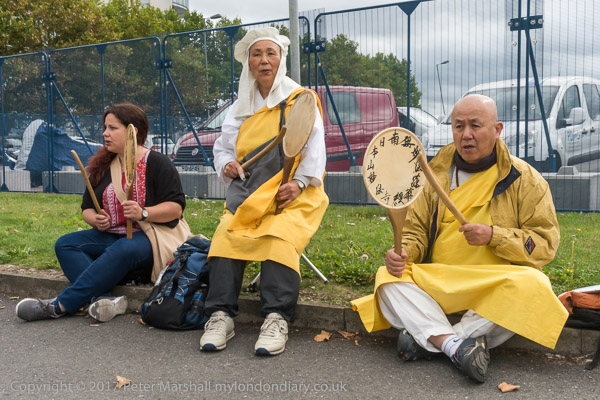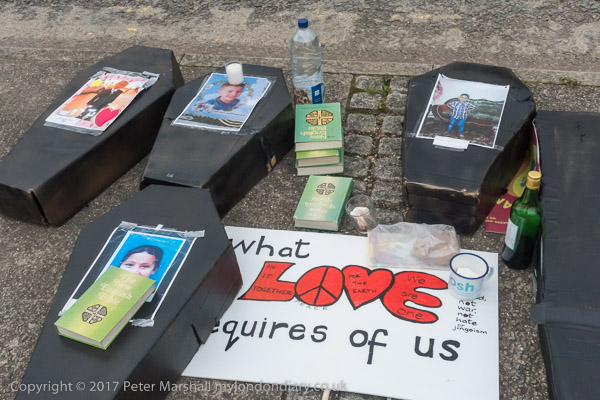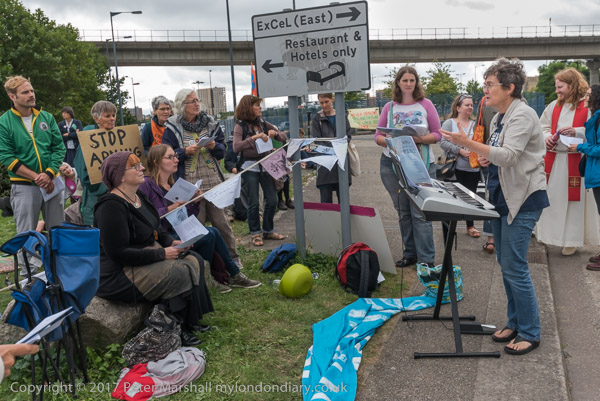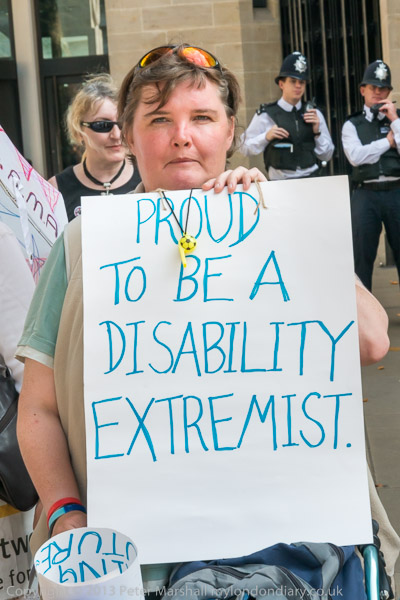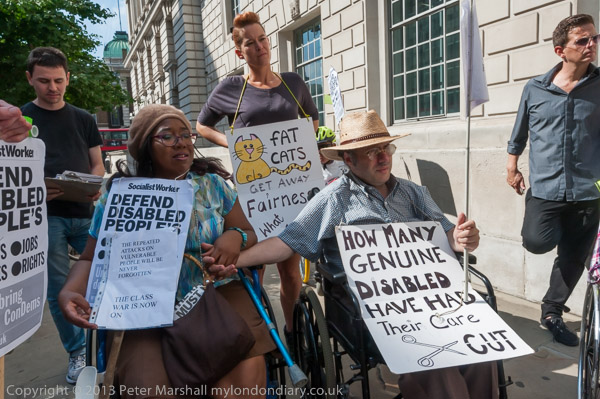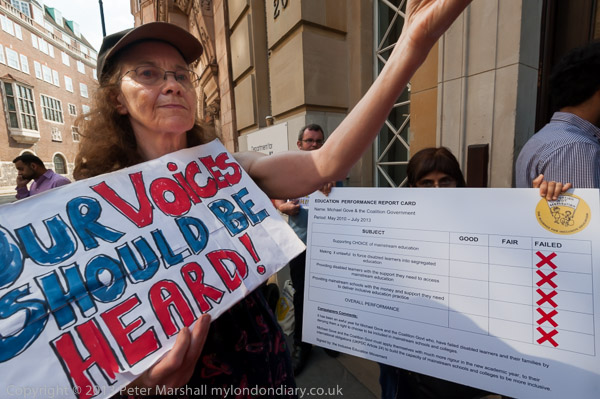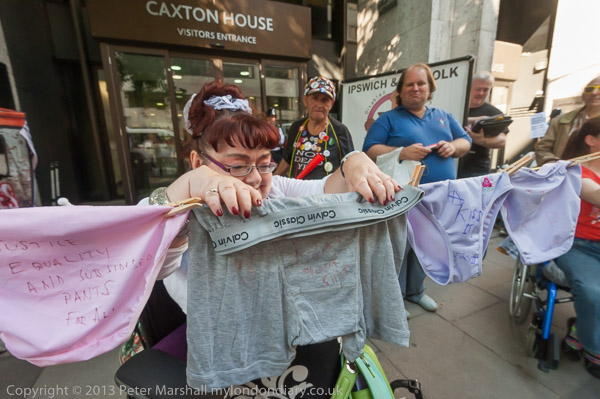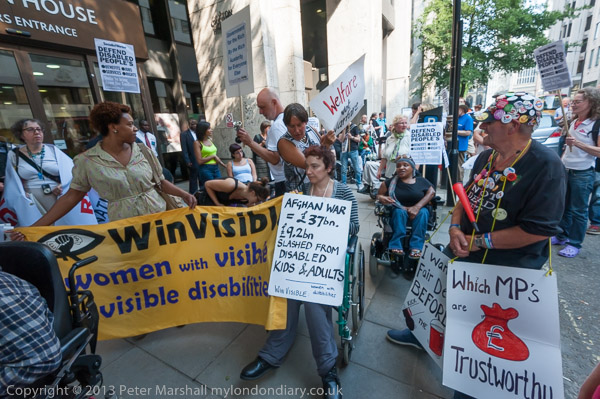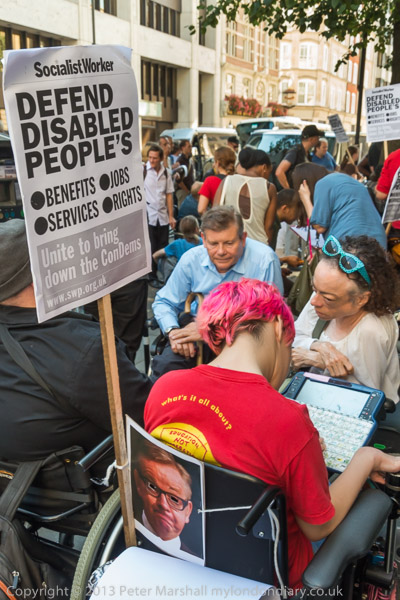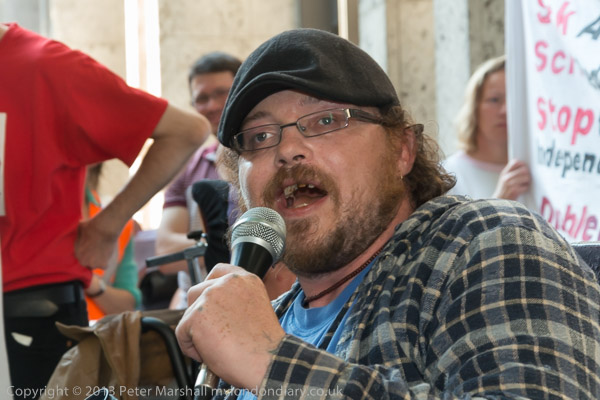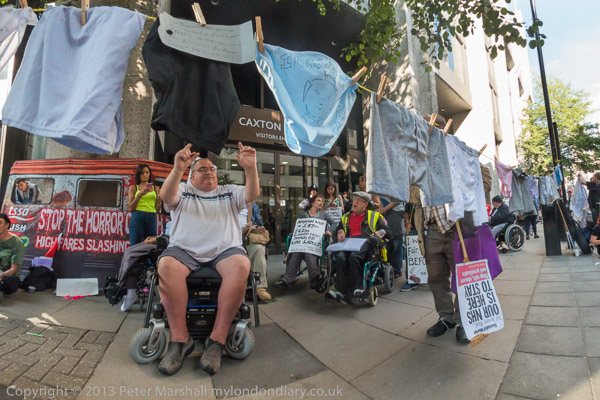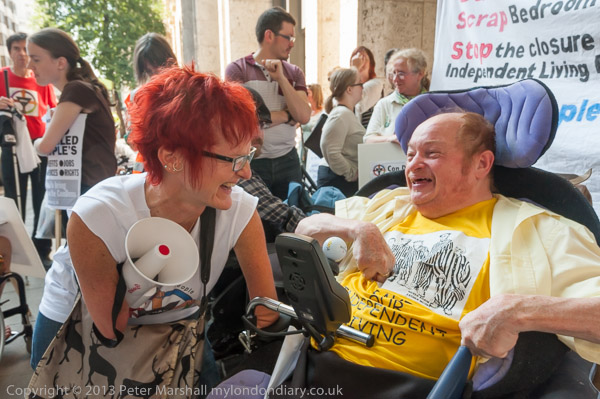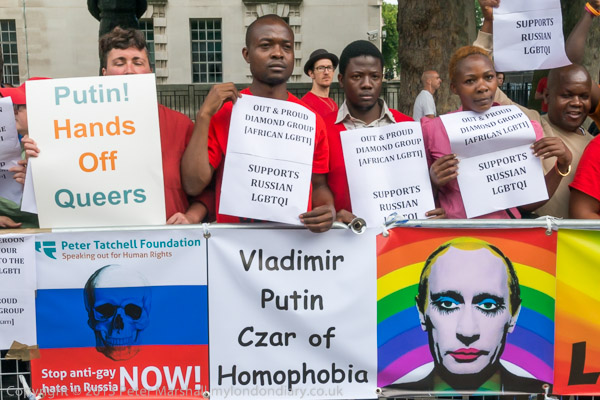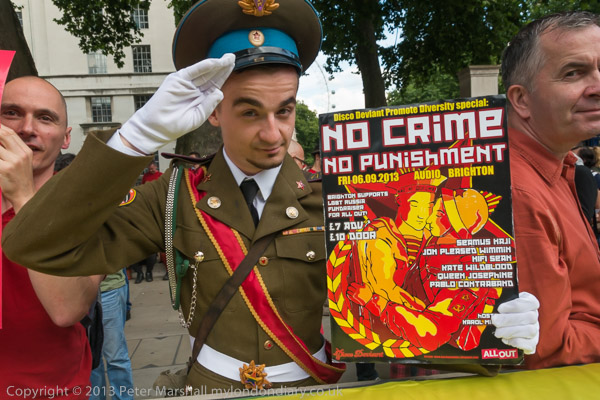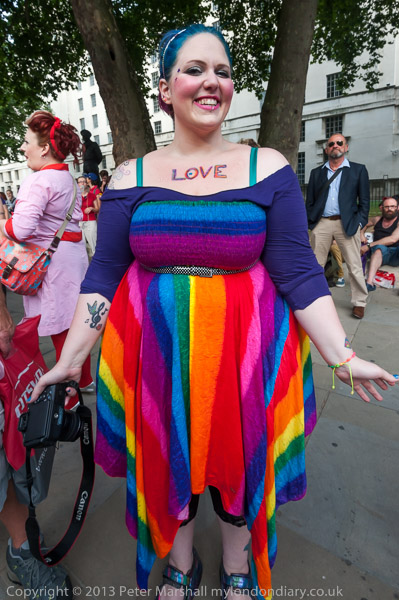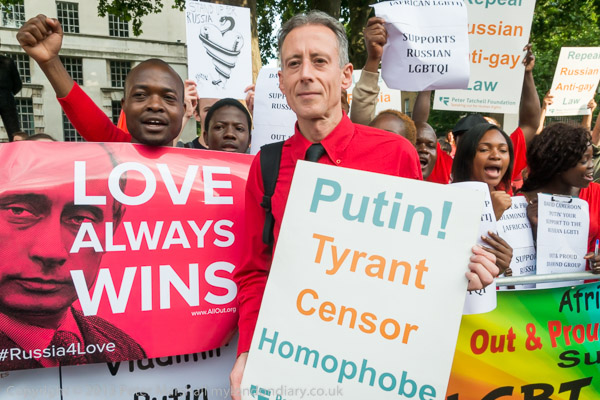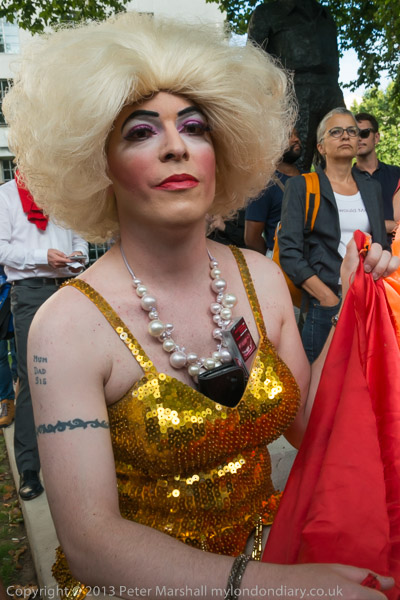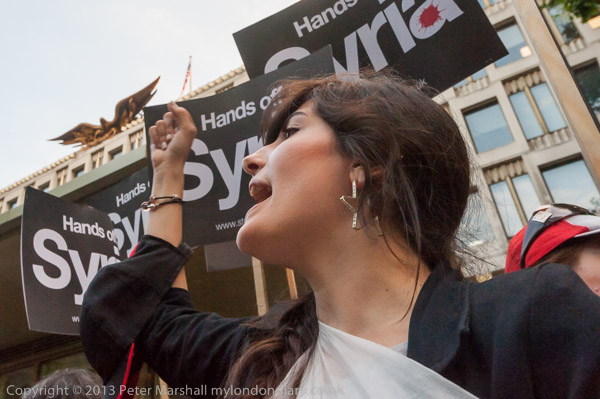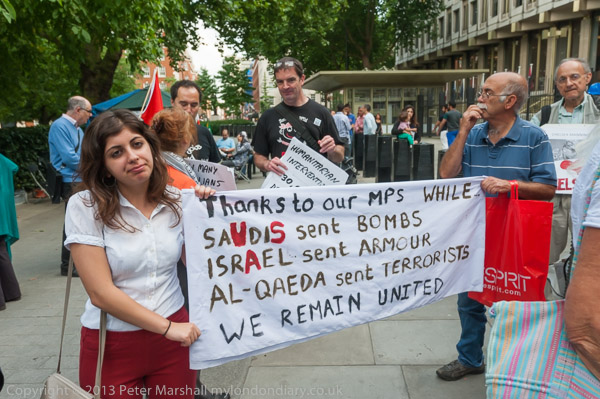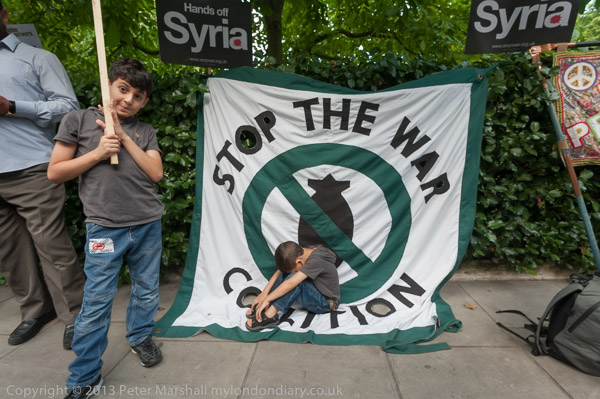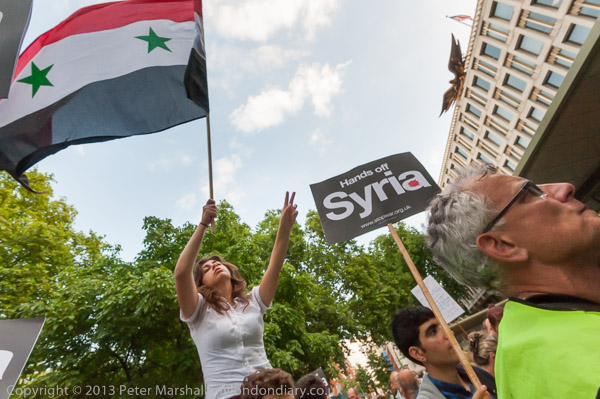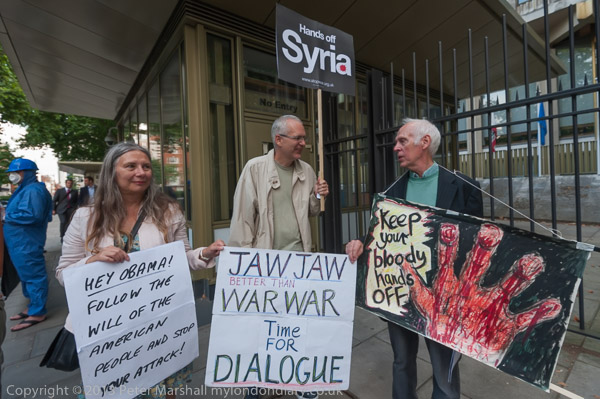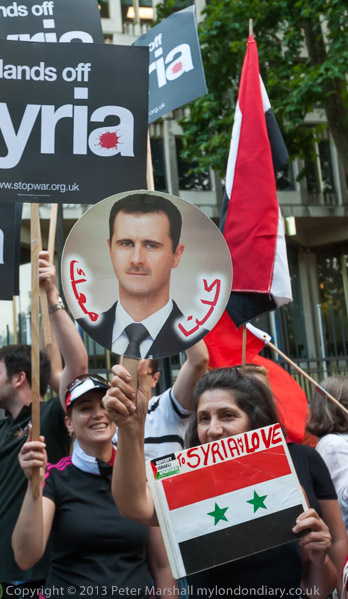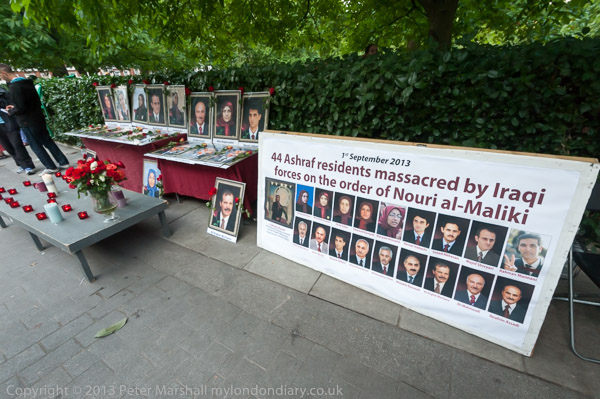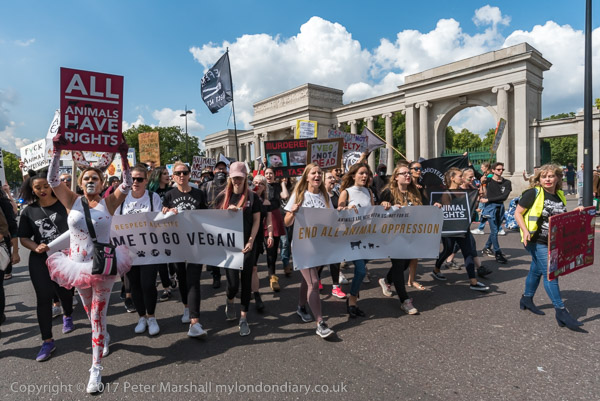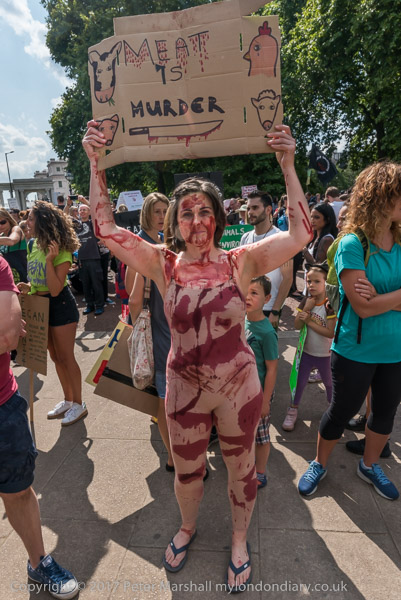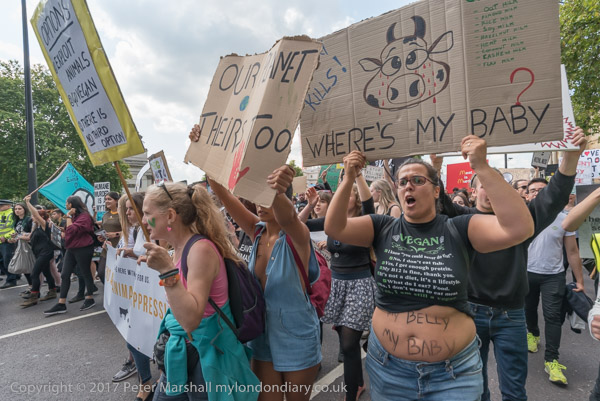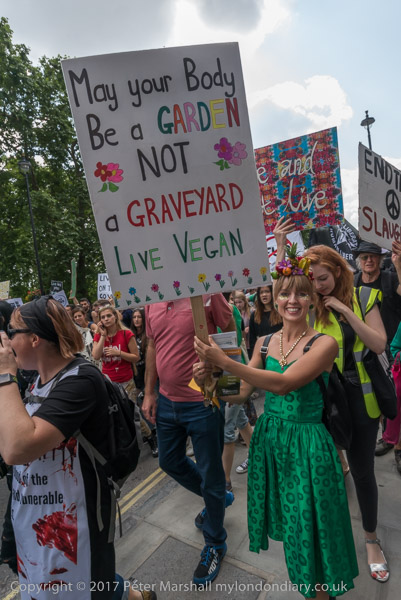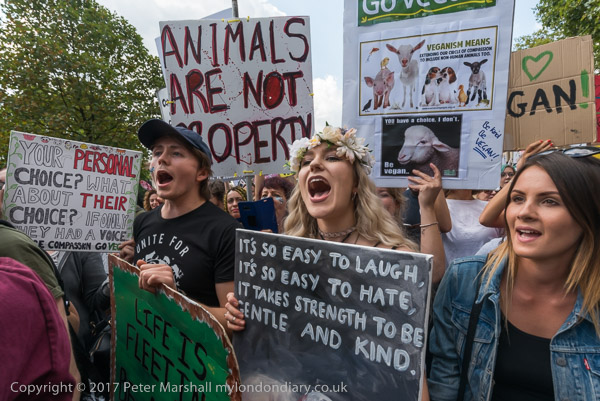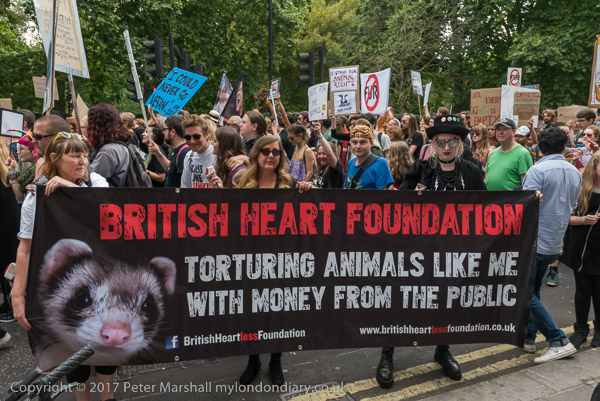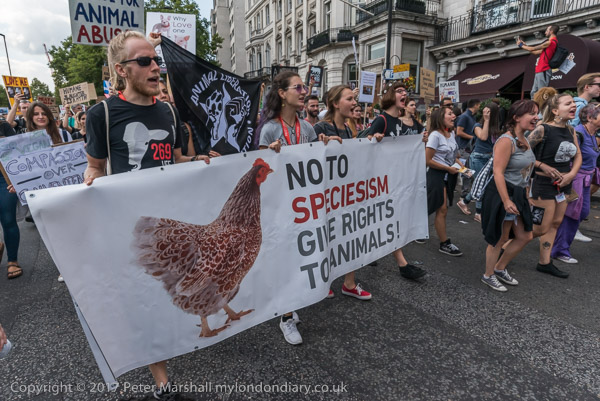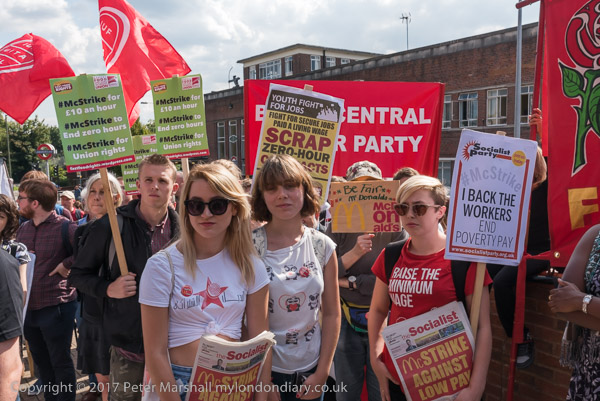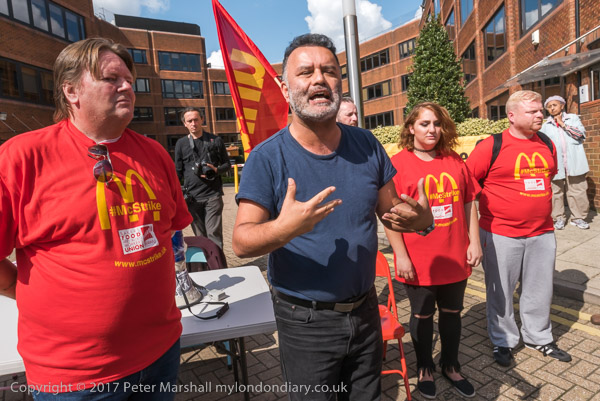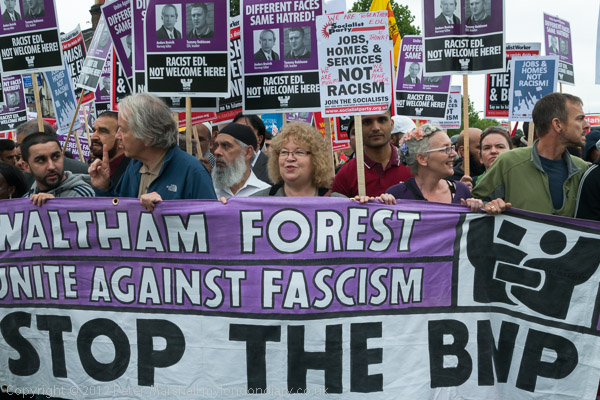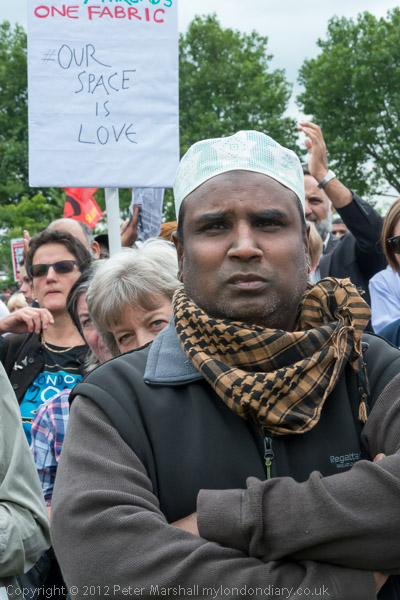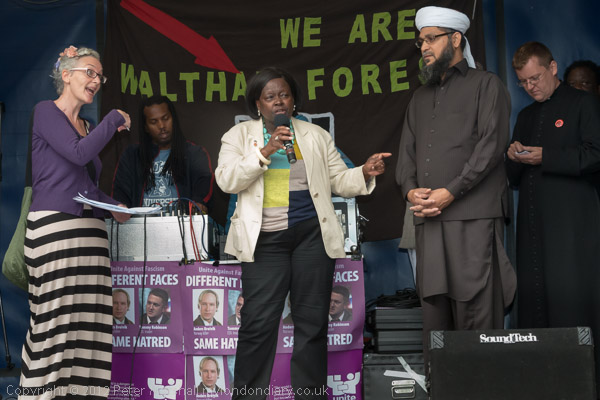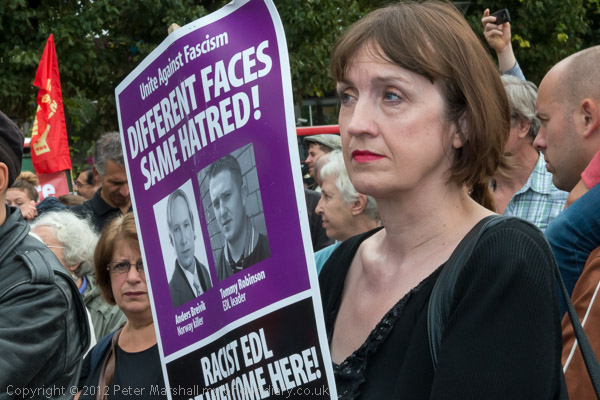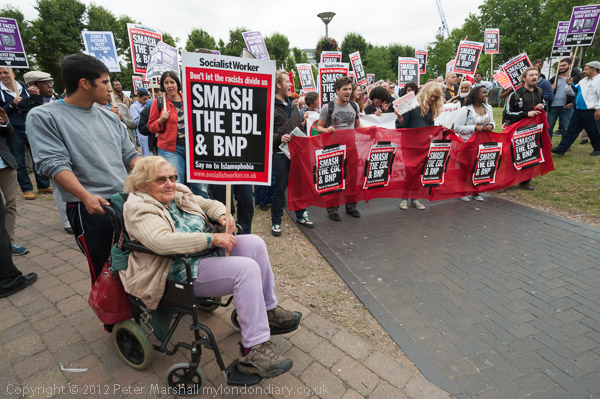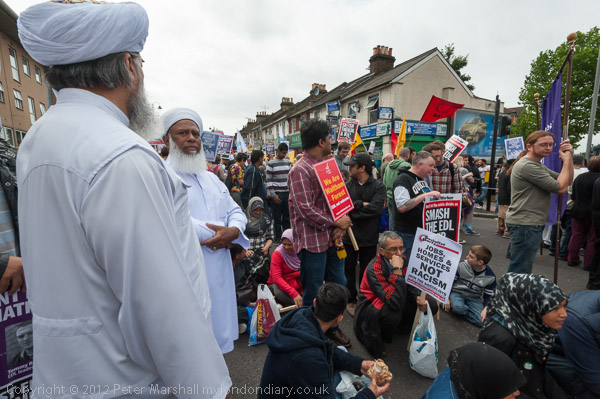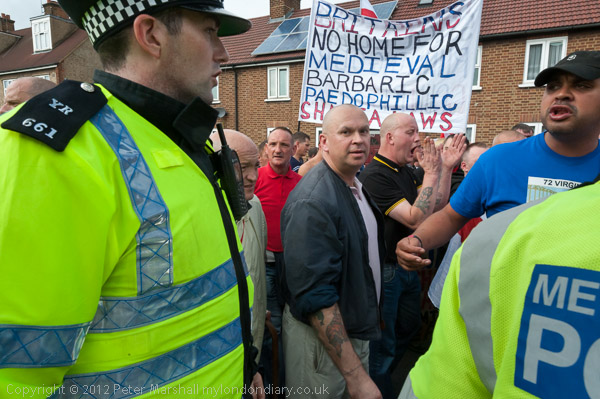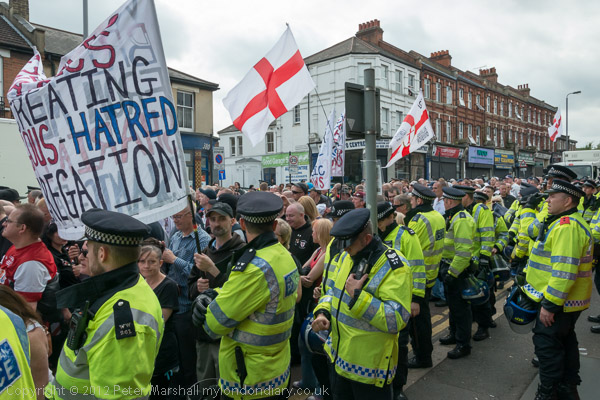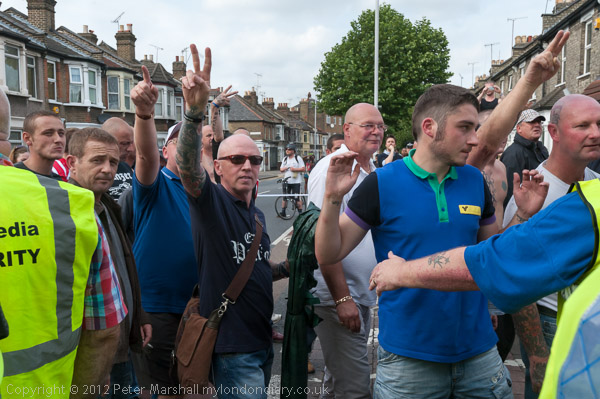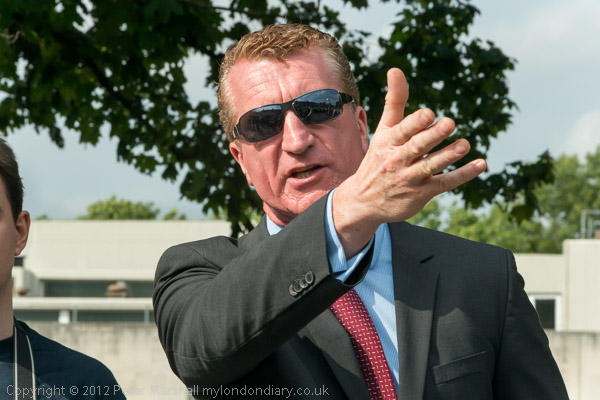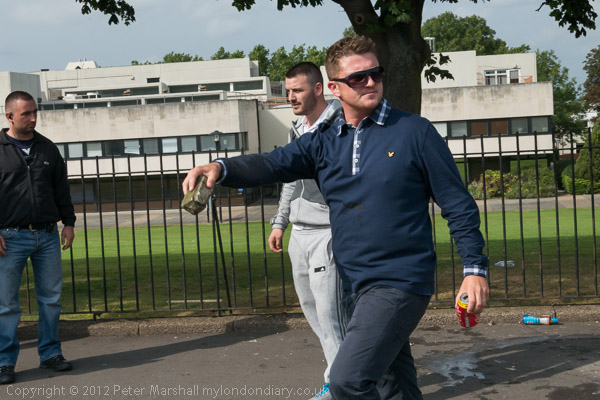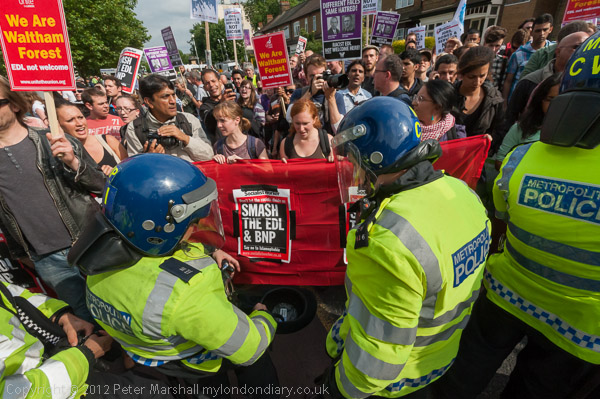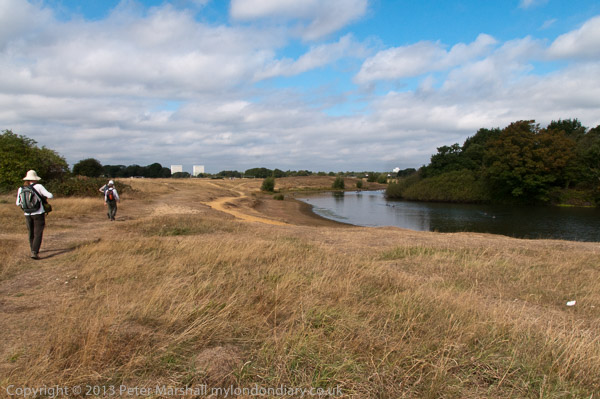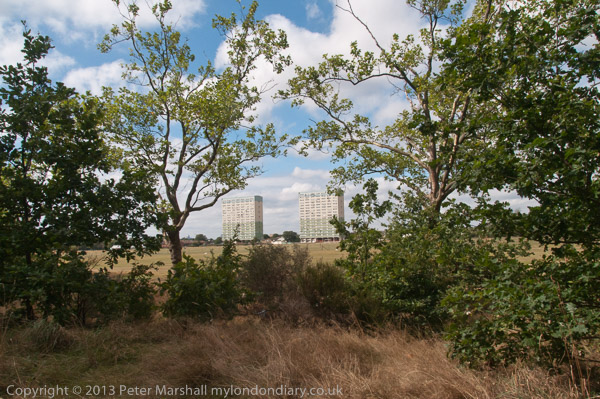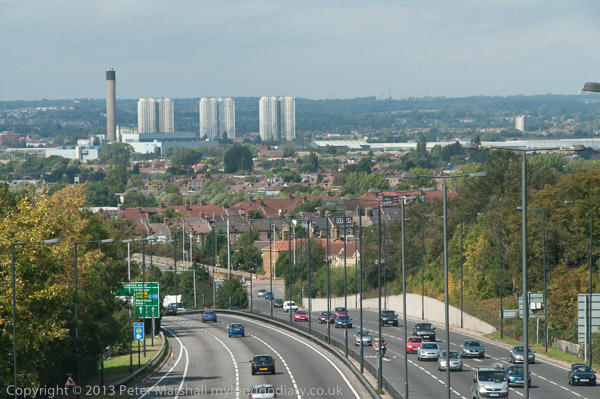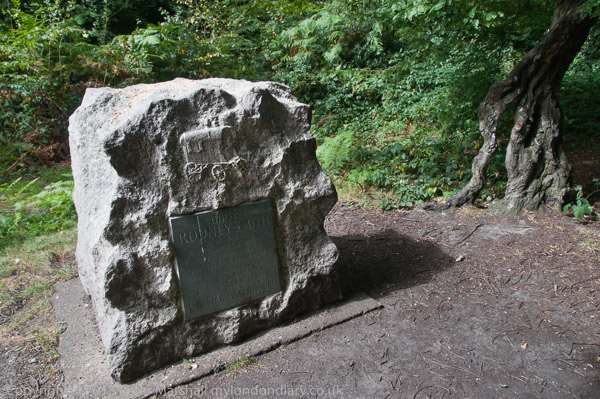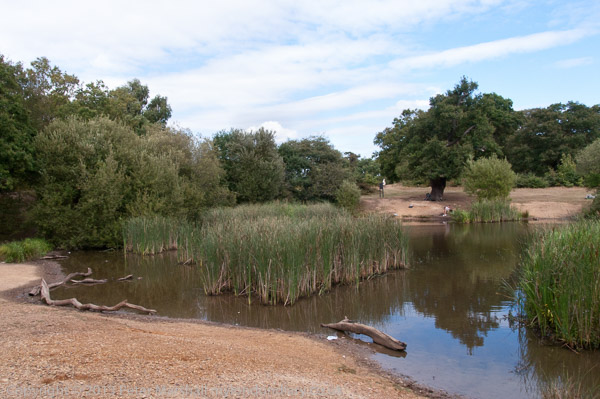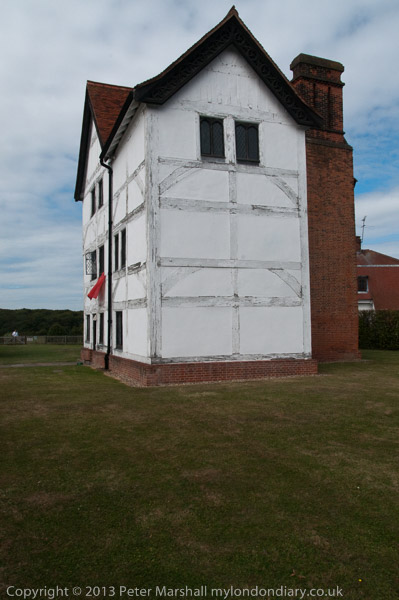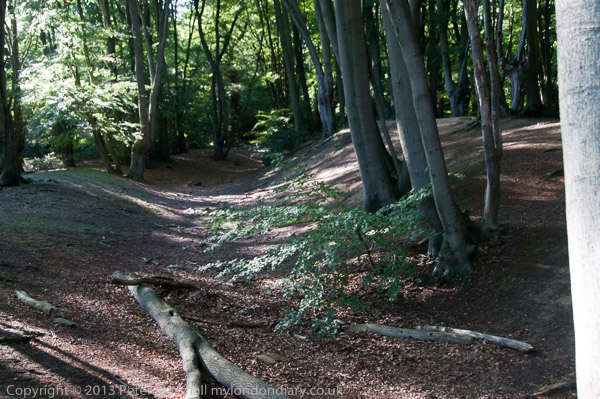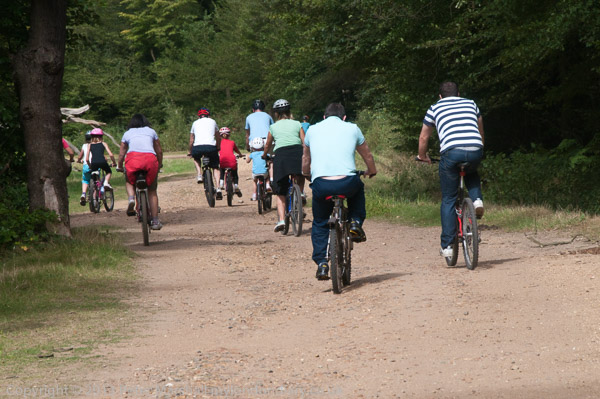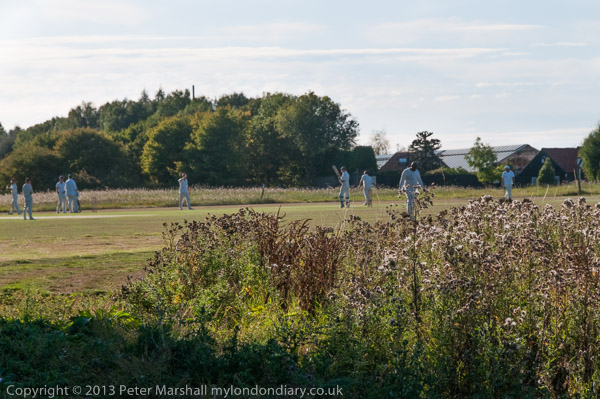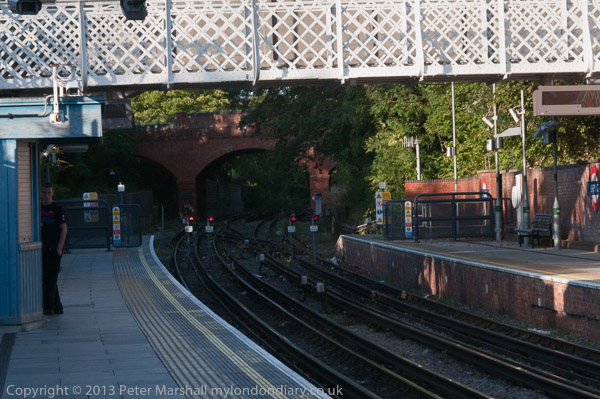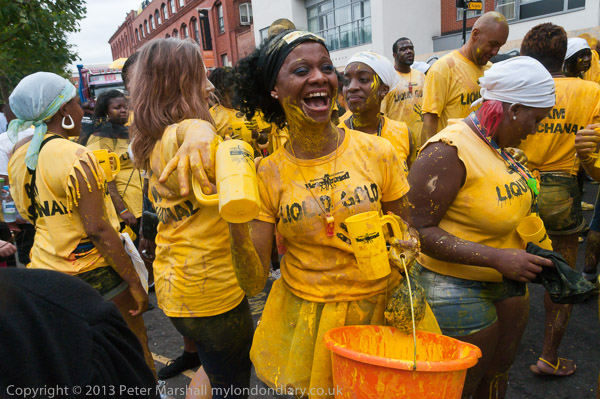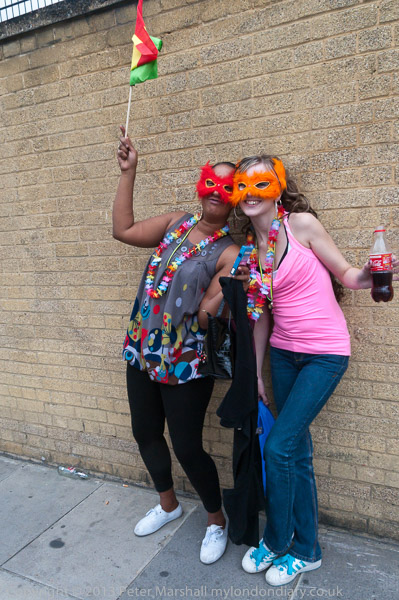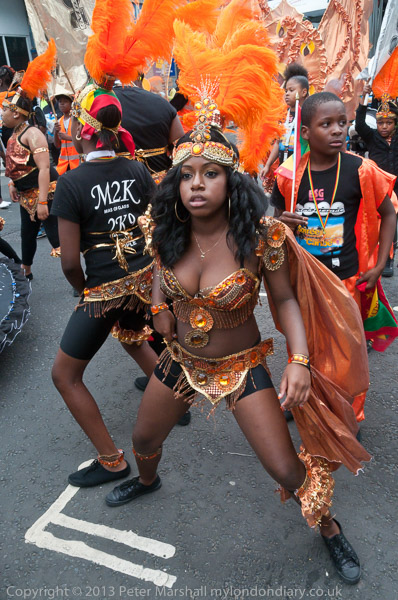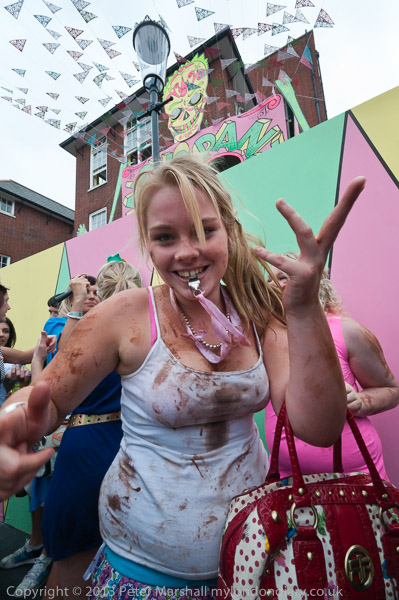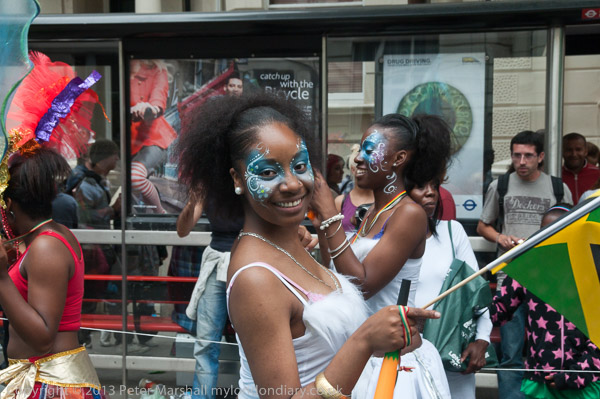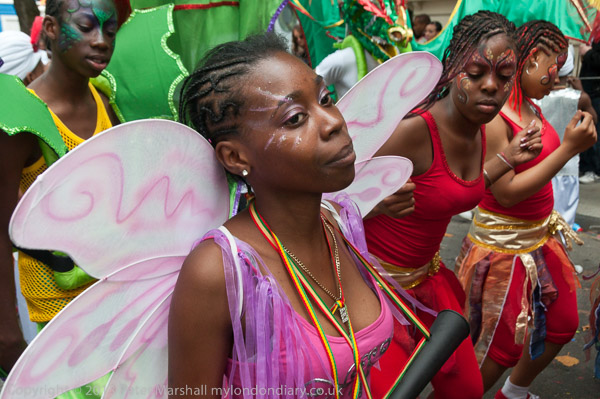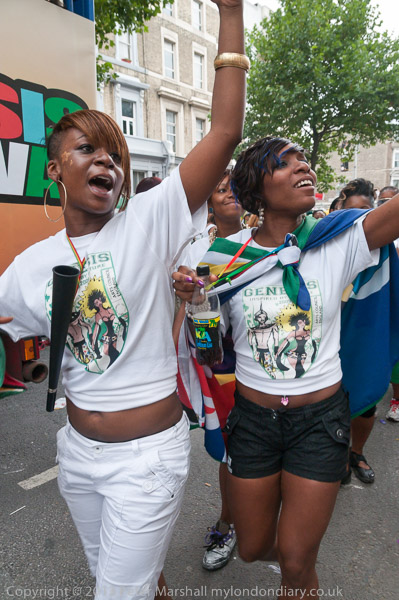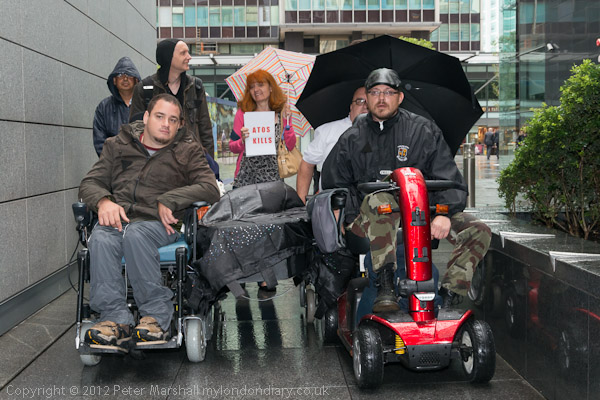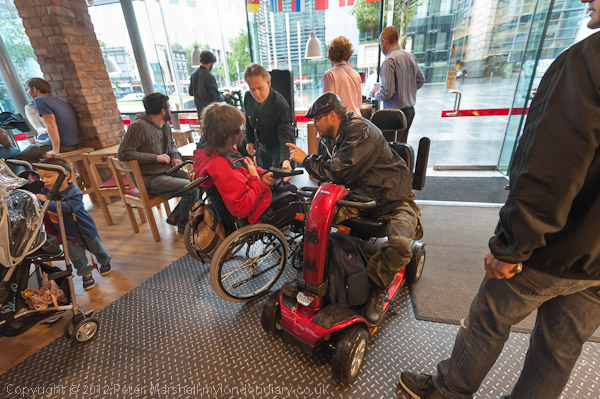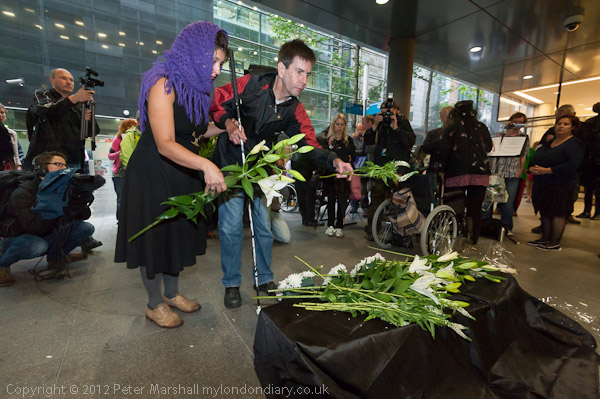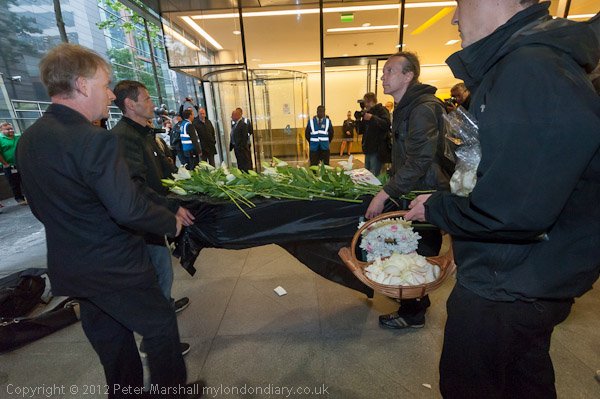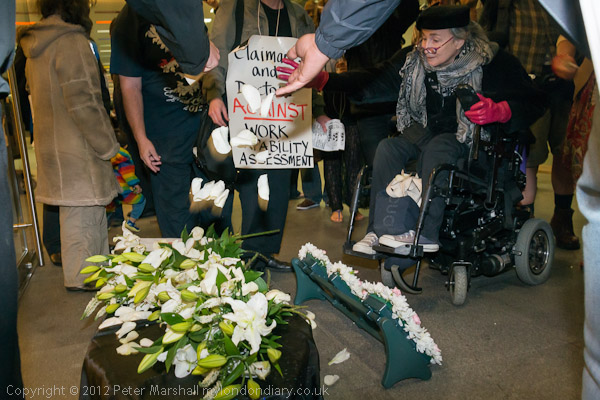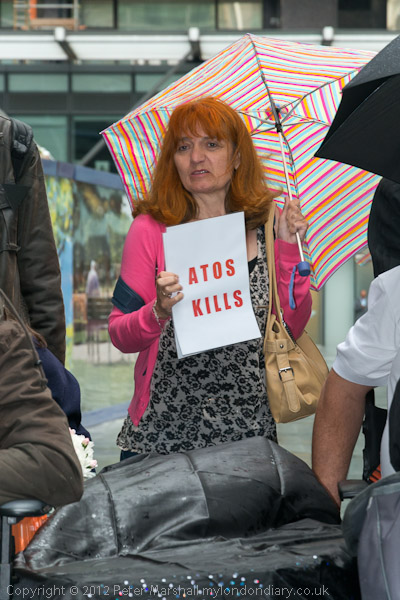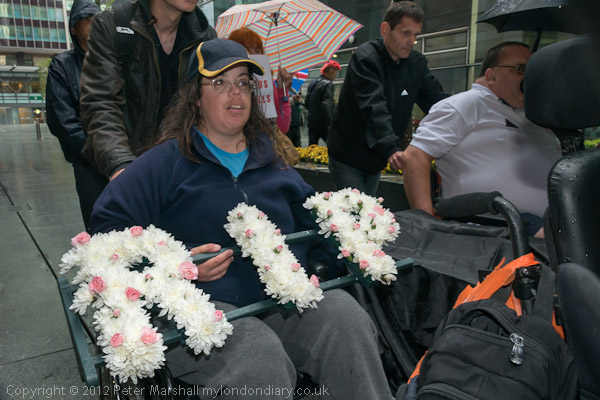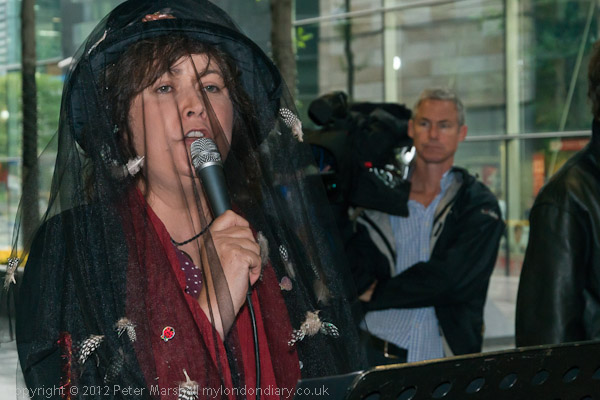EDL Stopped, Musicians at Arms Fair, Silvertown: On Saturday 7th September 2013 after photographing the EDL attempting to march into Tower Hamlets and the people coming out to stop them I went on to the Excel Centre in Newham where East London Against Arms Fairs were holding a Musical Protest against next weeks DSEi arms fair. And on my way home I took more pictures.
EDL Try To March Into Tower Hamlets
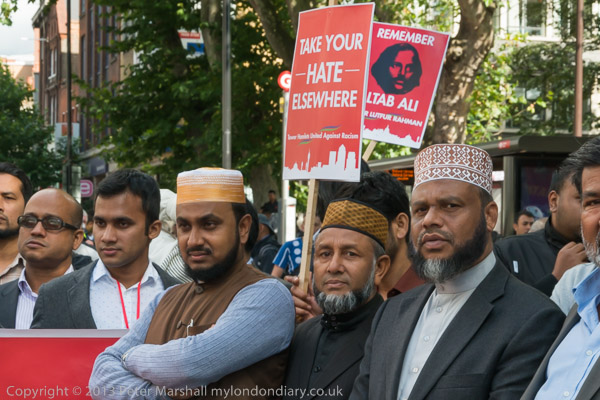
I started the day in Bermondsey were around a thousand EDL supporters were gathering for a march across Tower Bridge to Aldgate High St.
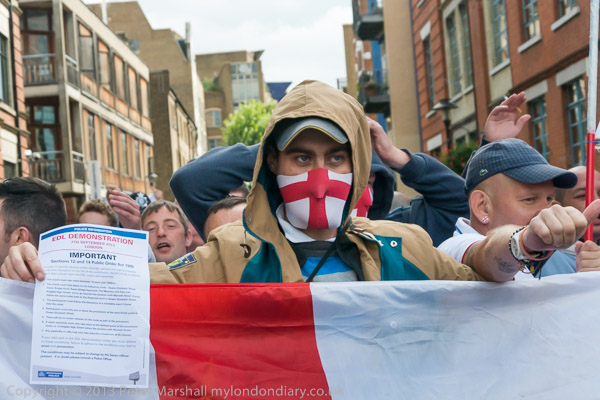
Police had laid down very strict conditions for the march, specifying the exact route and timings and more, which where specified on A4 sheets they handed out to protesters and were also broadcast every few minutes from a loudspeaker van where the marchers were gathering.

There was a very strong police presence on the streets with police on all sides around the marchers and some mingling with them. The EDL were also on their best behaviour, with many posing for photographs. A couple who arrived in pig’s head masks were forced by police to remove them and hand them over.
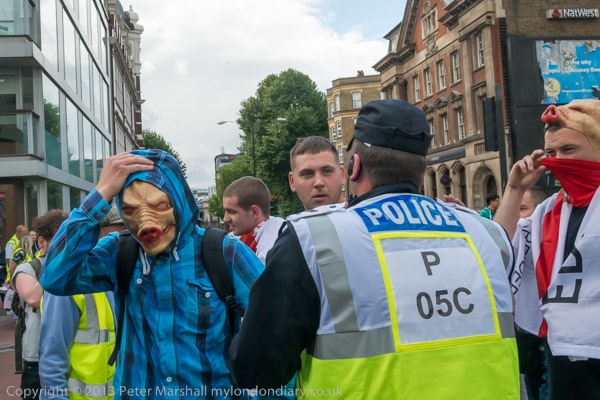
There was still a great deal of racism and hate in the comments that were being made and when the march got under way the majority took up the usual Islamophobic chants including “Allah, Allah, who the f**k is Allah“.
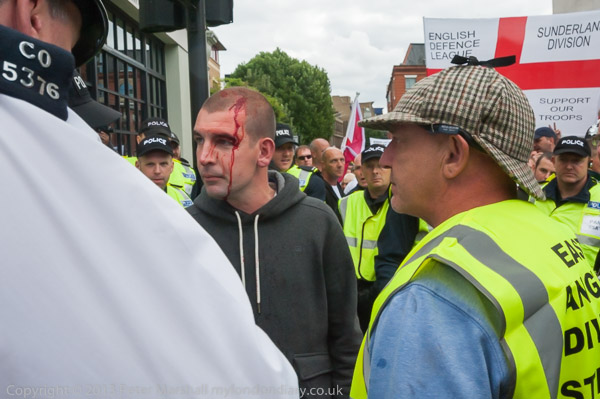
There were a small number of anti-fascist protesters in the area, and police tried to keep them well away from the march, although EDL stewards who led away one man with a bleeding face from the crowd alleged he had been hit by a bottle thrown from across the road.

As the march set off, police moved photographers well away, and police handlers with dogs walked in advance of the marchers. Later I was able to get a little closer.
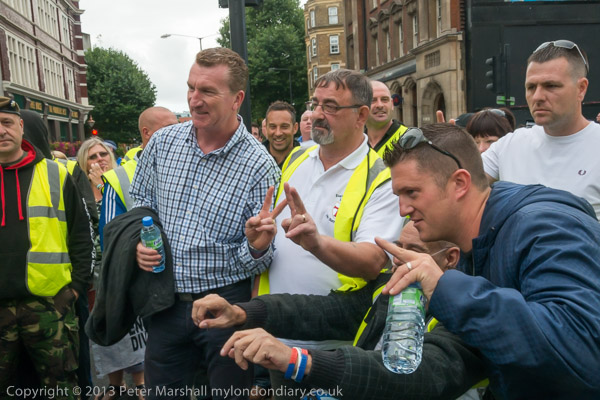
After crossing Tower Bridge I saw red smoke in the distance coming from the ground in front of a row of police vans in Mansell St and rushed there to find a group of around 50 anti-fascist protesters, mainly dressed in black, with red and black flags and a few with Unite Against Fascism placards.
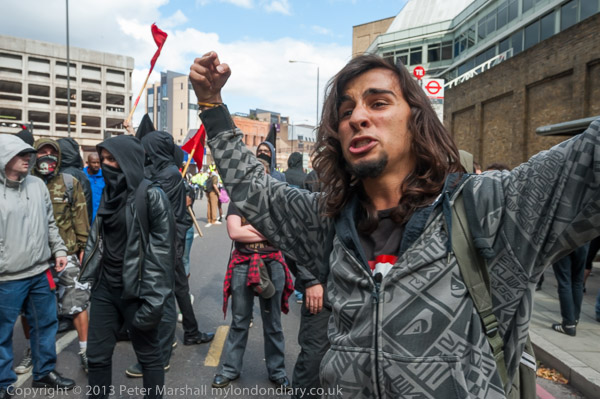
The EDL march stopped for a couple of minutes opposite them and the two sides shouted insults at each other with the police keeping them well apart before the march moved on to Aldgate High Street without further incident. I later heard that the anti-fascists here had been kettled for some hours before many of them were arrested.
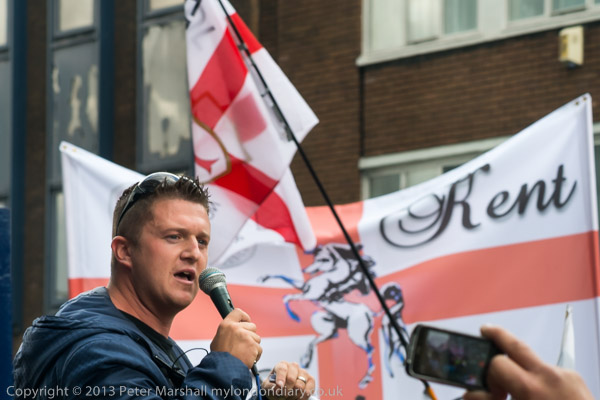
I photographed Tommy Robinson addressing the rally, then made my way to where a counter-protest was being held by the community of Tower Hamlets, united in opposing the EDL. I had to go through several lines of police, showing my Press Card. A few officers refused to let me through, but I was able to walk along the line and make my way through.
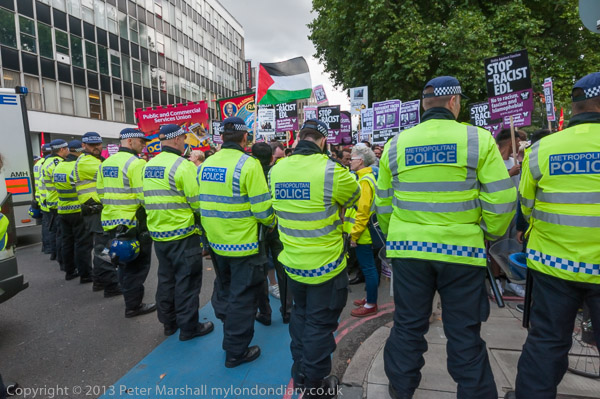
As I commented, “It was a remarkable change in atmosphere from the feeling of hate and Islamophobia that filled the air with gestures and chanting from the EDL to the incredible unity and warmth of the several thousands largely from the local community who had come out to oppose them and make a statement based around love and shared experience of living in Tower Hamlets with people of different backgrounds and religion.”
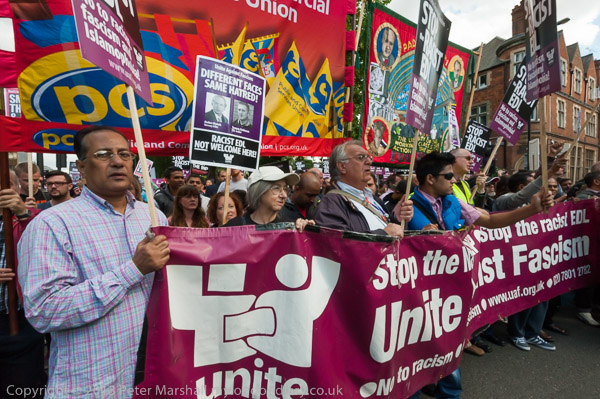
There was clearly a determination in Whitechapel, as there was in the 1930s at the Battle of Cable Street which had taken place not far away of a community that had decided that ‘They shall not pass’. And although most had come to protest peacefully, had the police not kept the two sides well apart, the EDL would have been heavily outnumbered by local youths angry at their presence.
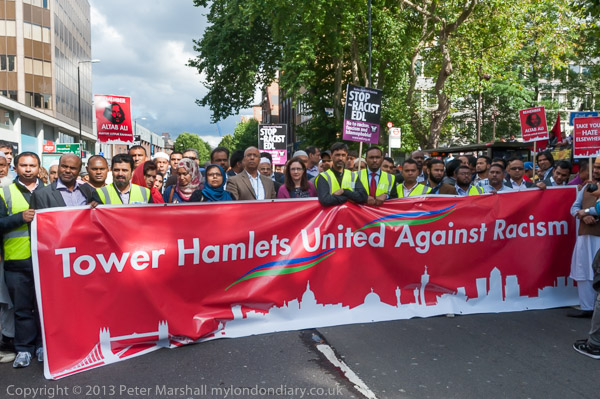
I’d left the EDL rally before Tommy Robinson was arrested for incitement, apparently for suggesting that people break some of the restrictions that police had imposed on the EDL march and rally. The police presence had prevented any large outbreaks of public disorder and although the EDL were up in arms over the arrest of their leader had protected them from a severe beating.
More on My London Diary at:
Tower Hamlets United Against the EDL
Anti-Fascists Oppose EDL
EDL March returns to Tower Hamlets
Musical Protest against Arms Fair – Excel Centre, Custom House
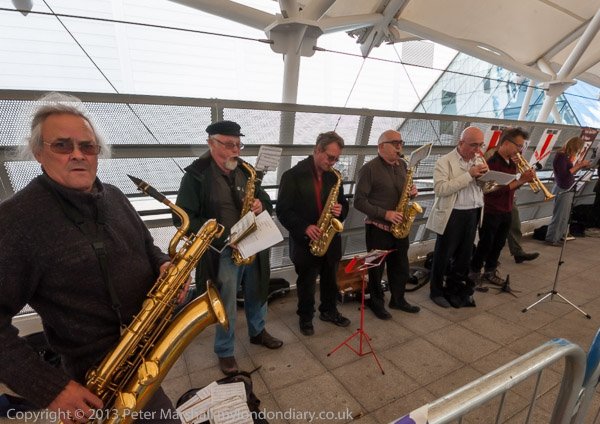
I didn’t stay long in Whitechapel but took the tube and bus to Custom House where on the walkway leading the the ExCel Centre East London Against Arms Fairs (ELAAF) were holding a Musical Protest against next weeks DSEi arms fair with a big band and singers and others handing out leaflets opposing the event.
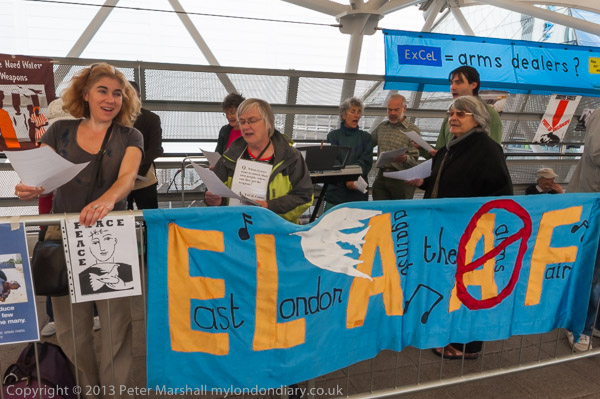
THe DSEi arms fair, held every other year at the ExCel Centre in London Docklands attracts buyers from all over the world, including those from many countries with oppressive regimes. It’s a showcase for the weapons they need to continue to oppress their populations and to wage war on their neighbouring states and others.
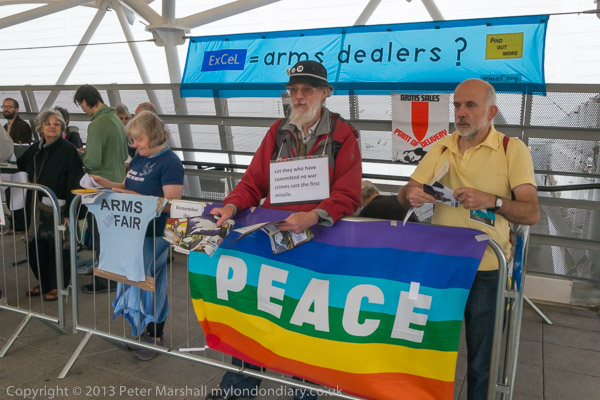
There were more and larger protests in the following week against the arms fair.
More at Musical Protest against Arms Fair.
Silvertown
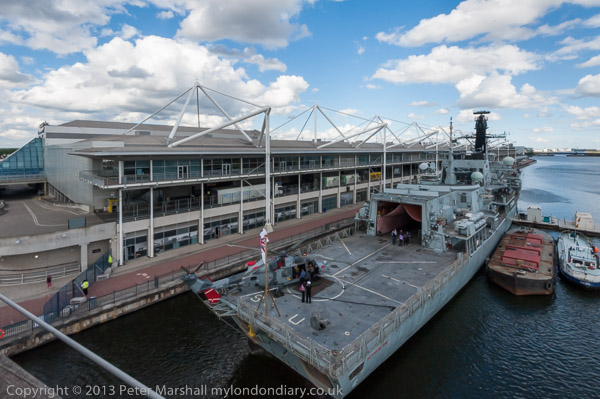
Although the DLR wasn’t running on the branch leading to Custom House, there were trains running on the branch through Silvertown and I walked to there across Victoria Dock on the high-level bridge, taking a few photographs.

The gates to the London Pleasure Gardens which had closed recently only a few weeks after its opening were locked but I was able to take pictures through the gates. I walked on to the elevated Pontoon Dock DLR station and made some panoramas from there before catching a train.
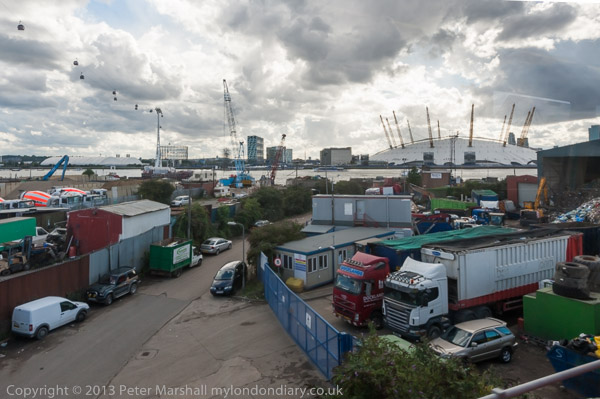
For once the DLR train had a very clean window and I took advantage of this to take some more pictures on the way to Canning Town where I changed to the Jubilee line.
More pictures: Silvertown







